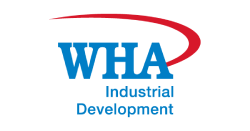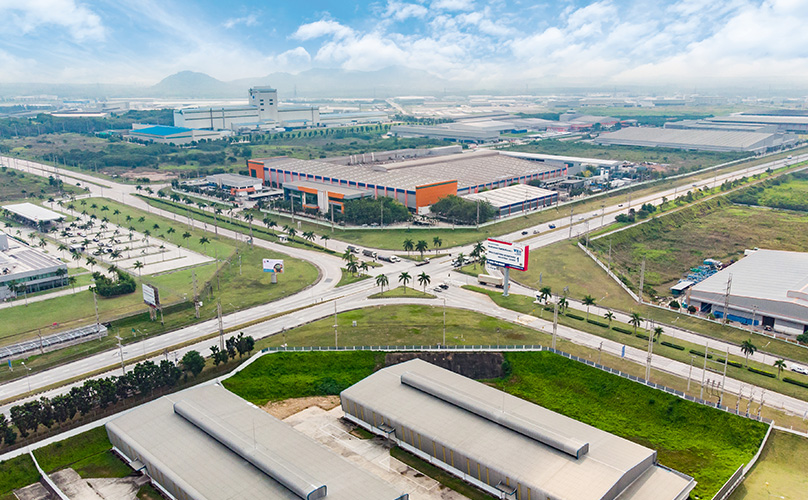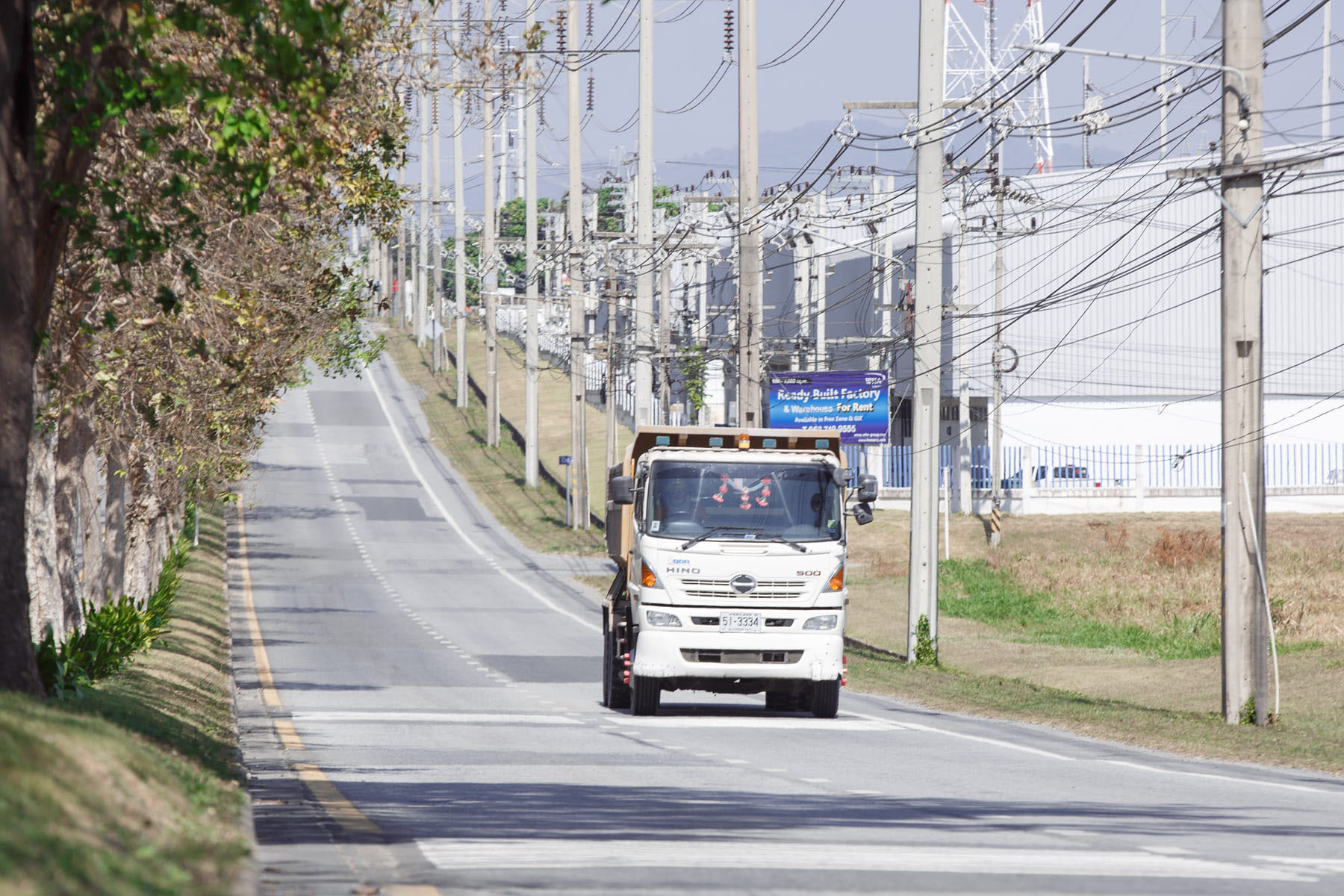Air Emission (Adaptive Traffic Control, Drone Technology)
In 2020, WHA Group conducted various traffic management initiatives in order to control the level of air emissions from internal and external stakeholders transporting within the industrial complex, such as dust and carbon monoxide that could potentially affect local communities and the environment.

ADAPTIVE TRAFFIC CONTROL
In 2020, WHA Group has installed an Adaptive Traffic Control System that uses CCTV to monitor the traffics and calculate the number of vehicles in the industrial complex. This is done in order to appropriately control the traffic lights in response to the current traffic situation. In the event where traffic is light, the duration of the red lights will be lowered, thus, reducing the time in waiting for red light signals. Consequently, vehicle engines are still running during this waiting period, so by reducing the duration will contribute to reducing the use of energy fuel, reduce air pollution and greenhouse gas emission. By using this system, approximately 573 Liter/week or 29,804 Liter/year of fuel oil can be saved.
DRONE TECHNOLOGY
Similarly, WHA Group is currently studying the use of drone technology in the road and traffic monitoring process during rush hours in 2020. The drones will help monitor any accidents occurring on the roads. It can also be used to detect any potential risks that can then be analyzed and used to identify and implement preventive actions to limit any future accidents. In the case of accidents, the drones will allow for a faster and more effective emergency response and action. Indirectly, by limiting numbers of accidents will also reduce the traffics on the roads. By detecting potential risks of accidents, less fuel will be used by ambulances with less accidents occurring. Altogether, this will help reduce air pollution.



